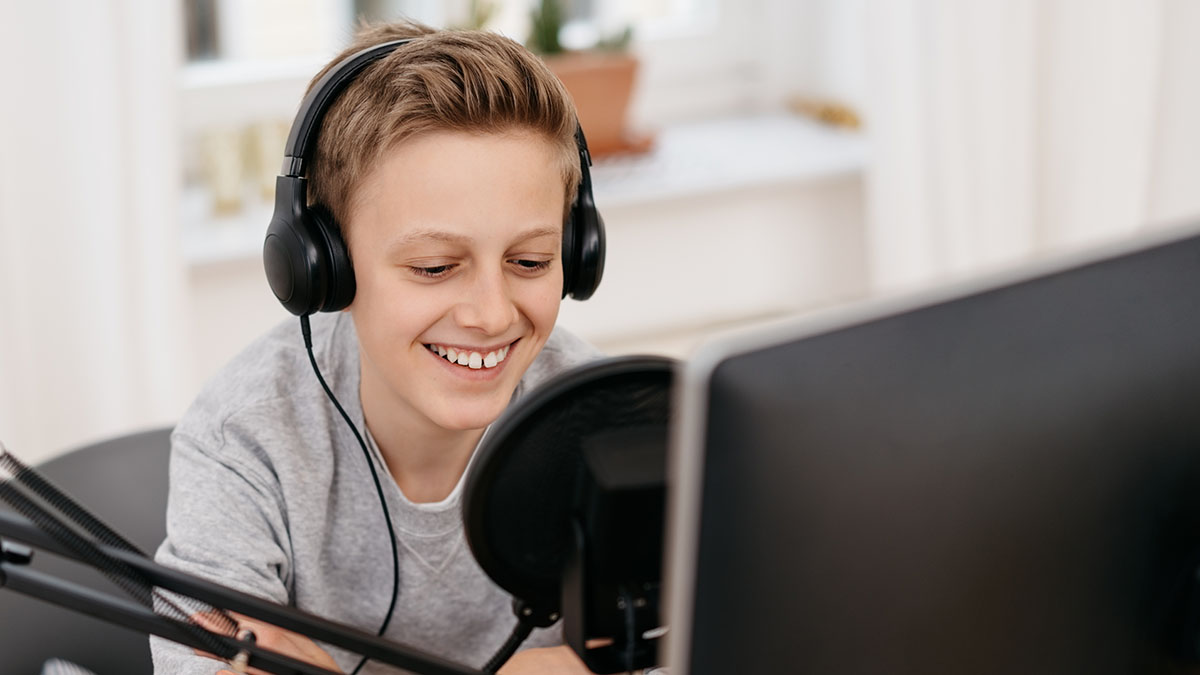
Making Middle Schoolers Into Media Moguls
Students express themselves through podcasts that follow their interests.
Topics: Technology, Student Engagement
In today’s digital landscape, it’s crucial for schools to empower students to find their voices and engage with the world around them. At Albert Leonard Middle School in New Rochelle, New York, student-led initiatives are transforming kids into media moguls who create and share compelling content through podcasts, articles, and interviews.
Our journey began in 2020 after the COVID-19 shutdowns started to ease. Podcasts had exploded onto the scene when everyone was stuck indoors, and we felt it was an appropriate medium to help young people express themselves and connect with their learning.
Agency and Exploration
By providing students with the agency to determine the topics they wanted to explore, we tapped into their curiosities and passions. This not only fostered a sense of ownership and engagement, but also encouraged students to develop essential critical thinking and communication skills.
For example, our school celebrates Red Ribbon Week to promote healthy choices and help navigate adverse situations involving drugs. We give students an opportunity to share the reasons behind the event, giving them the agency to express themselves and disseminate information related to the cause. Last fall, sixth grade students learned how to create, animate, and edit videos in Canva to show what they learned during Red Ribbon Week and its importance.
We help our students access technology, resources, and guidance. We have clubs that teach interviewing techniques, writing for different media, and video production. Our students learn to research, gather information, and craft compelling narratives that resonate with their audiences.
Most of what we do involves Chromebooks and web-based tools, especially the free tools Canva offers. Once students learn the ins and outs of the program, they can use it in school and at home. Our students often find the developing, editing, and creating processes so compelling that they can’t help but work on their projects at home.
We encourage students to connect their work with events and initiatives happening in school and the wider community. For instance, our students developed, produced, and performed podcasts and wrote articles focusing on school events and initiatives such as afterschool clubs and extracurricular events. They contributed meaningfully to the school while honing their media skills.
Student-Created
One of our most successful student-led initiatives is the “Teacher Features” podcast series. Student-conceived and student-executed, the project identifies teachers and invites them for interviews, giving the school community a unique glimpse into their lives and personalities. It strengthens student-teacher relationships and provides students with experience in conducting interviews and producing podcasts. The same students who developed this series are busy coming up with its next iteration to expand upon the original idea.
We love to see students learn and grow from each experience, taking what works and adjusting what doesn’t. The goal is to try something new, make mistakes, learn, grow, and go back to the drawing board to make something even more compelling. We see growth from episode to episode in our podcasts, featurettes, and newscasts. Watch them on the ALMS Media Club YouTube channel (youtube.com/@ALMSMediaClub).
Students have diverse interests, and we provide platforms for them to explore those passions. From sports commentary to weather reports, students are encouraged to share their knowledge and insights through written articles and short video newscasts. By covering school events such as volleyball games, they gain firsthand experience in reporting and develop a sense of community involvement.
Information and Impact
The impact of having student-led media initiatives has been profound. Students have grown in confidence, communication skills, and critical thinking abilities. They have learned to collaborate, respect diverse perspectives, and use their voices to inform and engage their audiences.
One enthusiastic group was interested in talking about sports. We conferred with them and helped develop a podcast series centered on live professional and school sporting events. We asked them to examine what makes “sports talk” interesting, and how differing opinions can be fun to listen to. We even brought teachers in to discuss their fan interests.
To get started on a media program like ours:
- Tap into interests. Students engage when they can produce content related to subjects in which they have an interest.
- Encourage connections. Students can develop podcasts focusing on school offerings, learning new skills while strengthening the community.
- Grow the experience. Encourage students to try something new and improve upon their projects later as they discover new skills.
Albert Leonard’s student-led media initiatives are a testament to the power of student voice. By fostering a culture of creativity, collaboration, and community engagement, we are nurturing a new generation of media moguls. Equipped with the tools, resources, and encouragement they need, students can become active, engaged citizens who make a positive impact on the world around them.
Camille Edwards-Thomas is principal of Albert Leonard Middle School in New Rochelle, New York.
Mark Silviotti is a teacher and the instructional technology facilitator at Albert Leonard Middle School.

